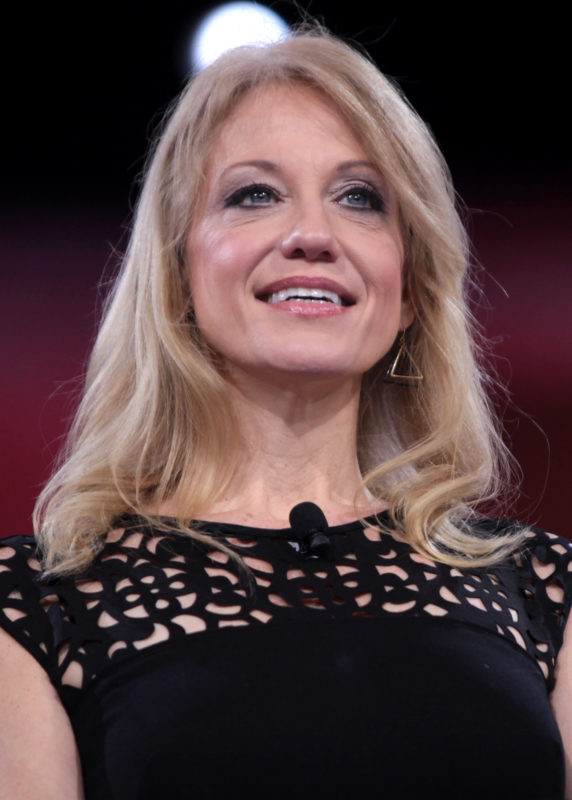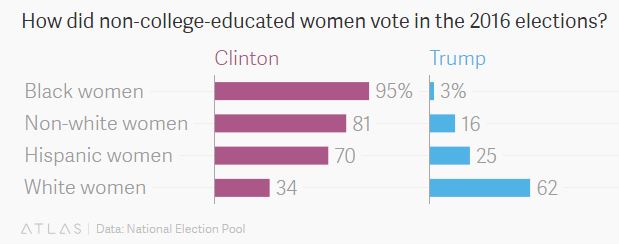“More than half of the white women who voted in the presidential election cast their ballot for Donald J. Trump, according to exit poll data collected by The New York Times. The data indicate how deeply divided Americans are by race and gender: 94 percent of black women who voted and 68 percent of Hispanic or Latino female voters chose Hillary Clinton, but 53 percent of all white female voters picked Mr. Trump.”
—“White Women Helped Elect Donald Trump,” The New York Times
Women played a seminal role in the 2016 election in several key aspects.
First, we saw women rise to high profile positions in the political process typically filled by men. At the Democratic convention in July, Hillary Clinton became the first woman to win a major party nomination for U.S. president. On the other side of the aisle, we saw Kellyanne Conway as the first female campaign manager of a Republican presidential nominee. Earlier in the election, Carly Fiorina ran the longest campaign to date for a female Republican presidential candidate.

Pollster Kellyanne Conway, the first female campaign manager for a Republican presidential campaign. Source: Wikimedia Commons
The 2016 election season has also seen a rise in female political donors on both sides of the aisle: “So far, 37 women rank among the top 150 donors to super PACs this cycle, according to federal campaign finance data analyzed by the Center for Responsive Politics and The Washington Post…Because of the entree that major donors get to elected officials, an increase in the number of women giving large sums to influence elections has the potential to shift the political focus of candidates, analysts said.”
Finally, though political pundits repeatedly predicted a huge gender gap in favor of Clinton, white women voters contributed at the ballot box to the surprise election of Donald Trump — non-college-educated white women in particular. This ran counter to the prevailing polls and media predictions, given the perception that women voters would overwhelmingly support Clinton. Interestingly, women made up less of the electorate this year than in the last presidential election. According to USA Today, “women accounted for about 52% of the electorate on Tuesday, a 1-point drop from 2012 — even though this year’s election was the first in which a woman was the presidential nominee of a major political party.”

Source: Quartz
What patterns and voting gender gaps have you encountered in elections in your lifetime? How do you think women can continue to exercise influence in our political process? What have you learned about women’s involvement in politics from this election? Let us know by leaving a comment below!